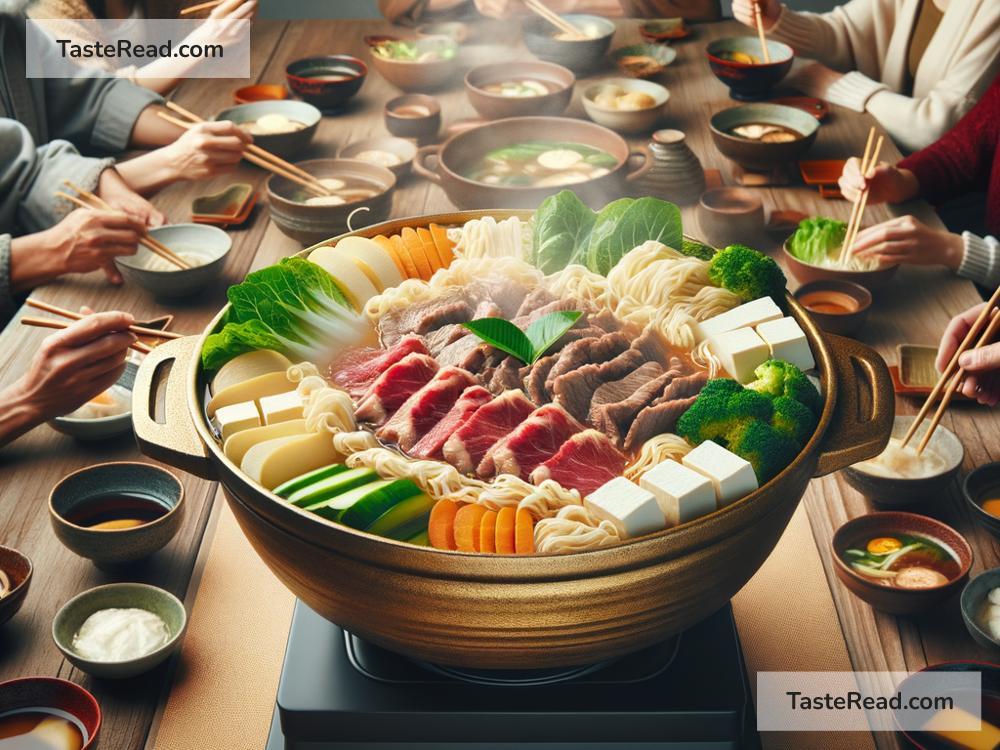Exploring the Delicate Balance of Flavors in Japanese Sukiyaki
One of the most beautiful aspects of Japanese cuisine is its ability to create complex flavors from seemingly simple ingredients. This skill is on full display in the traditional dish known as sukiyaki. Sukiyaki is more than just a meal; it’s an experience, a blending of tastes and textures that can astonish the palate. It involves thinly sliced beef, vegetables, tofu, and noodles, all simmered together in a sweet and savory sauce. But what truly makes sukiyaki stand out is the delicate balance of flavors that come together to create something unique and delicious.
The journey of sukiyaki is a fascinating dive into the art of Japanese cooking. Traditionally prepared at the table on a portable stove, sukiyaki invites everyone to participate in the cooking process, adding an element of fun and social interaction to the meal. The ingredients are not just thrown together indiscriminately. Instead, each component is carefully chosen and prepared to contribute to the overall harmony of the dish.
The base of sukiyaki’s flavor magic is the sauce, known as warishita. This mixture of soy sauce, sugar, and mirin (a type of rice wine) is what gives sukiyaki its iconic taste. The sauce’s sweetness and richness come from this blend, balanced delicately with the savory depth of the soy sauce. The trick is getting the ratios just right, as too much of one element can overwhelm the others, tipping the balance in an undesirable direction.
Once the warishita is prepared, the cooking can begin. The dish is typically started by melting a piece of fat from the beef in the pan. This not only prevents sticking but also adds an extra layer of flavor to the mix. Then, the beef slices are quickly seared in this fat. Be careful though, as the beef in sukiyaki should be tender and barely cooked, melting in your mouth with every bite.
After the beef, it’s time for the vegetables and other ingredients to join the party. Ingredients like negi (Japanese leeks), shiitake mushrooms, and Chinese cabbage are common, along with tofu and sometimes noodles. Each element brings its own texture and taste to the dish, from the earthiness of the mushrooms to the crisp freshness of the cabbage. The key here is to let each ingredient shine while maintaining the overall balance of flavors.
As everything cooks together, the ingredients absorb the warishita, becoming vehicles for the delicious sauce while also contributing their natural flavors back into the mix. It’s a back-and-forth exchange of tastes that enriches the whole dish, making each bite a discovery of different flavor notes.
Serving sukiyaki is just as important as cooking it. It is traditionally enjoyed directly from the pan it’s cooked in, emphasizing the communal aspect of the meal. It’s often accompanied by a dipping sauce made from raw, beaten eggs, which adds a creamy texture and helps balance out the sweetness of the warishita. The contrast between the hot, savory ingredients and the cool, smooth egg is another layer in the complex flavor profile of sukiyaki.
Achieving the perfect balance in sukiyaki is an art, one that requires attention to detail and an appreciation for subtlety. It’s not just about following a recipe but understanding how the flavors work together, adjusting and tasting as you go. This balance is what makes sukiyaki so special and why it’s cherished in Japanese cuisine.
In closing, sukiyaki is a beautiful example of the harmony that can be achieved in cooking. It invites us to explore a delicate balance of flavors, where each ingredient is respected and valued for its contribution to the whole. Whether you’re cooking it for the first time or the hundredth, there’s always something new to discover within its savory depths. So, gather your friends or family, prepare your ingredients, and embark on a delicious journey through the art of Japanese sukiyaki.


